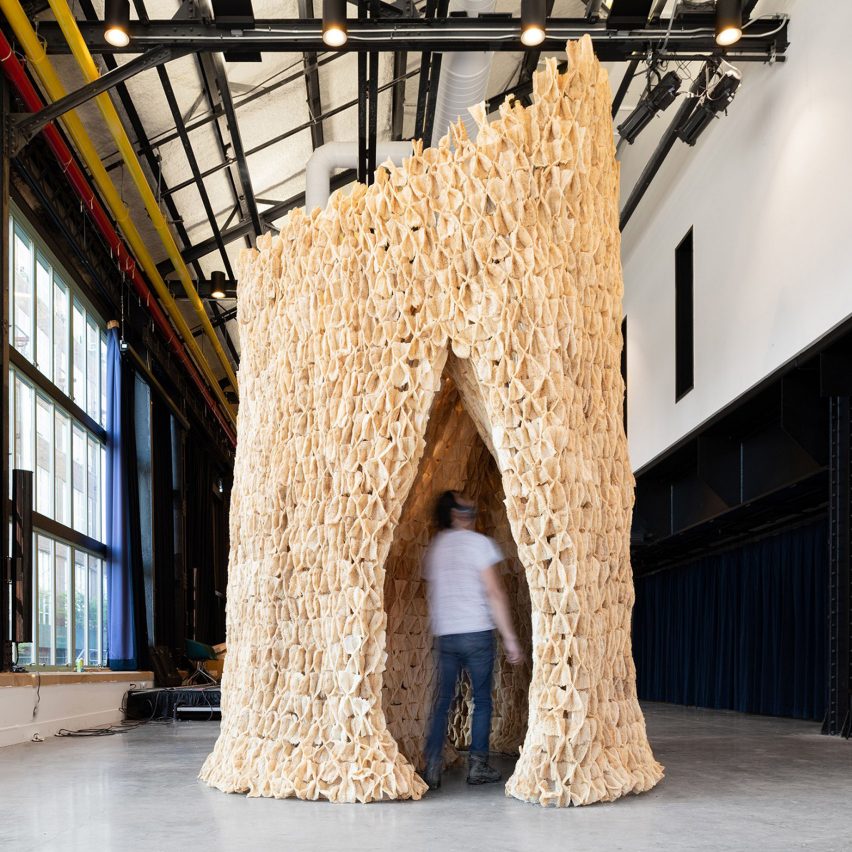
New York studio The Living developed a pavilion for the Venice Architecture Biennale to demonstrate how organic materials with microbial properties could be used in architecture to help create healthier environments for humans.
The Living was invited by Biennale curator Hashim Sarkis to create the Alive pavilion for an exhibit titled Among Diverse Beings, which is presented at the city's Arsenale venue. The installation has been shortlisted in the small building category of Dezeen Awards 2021.
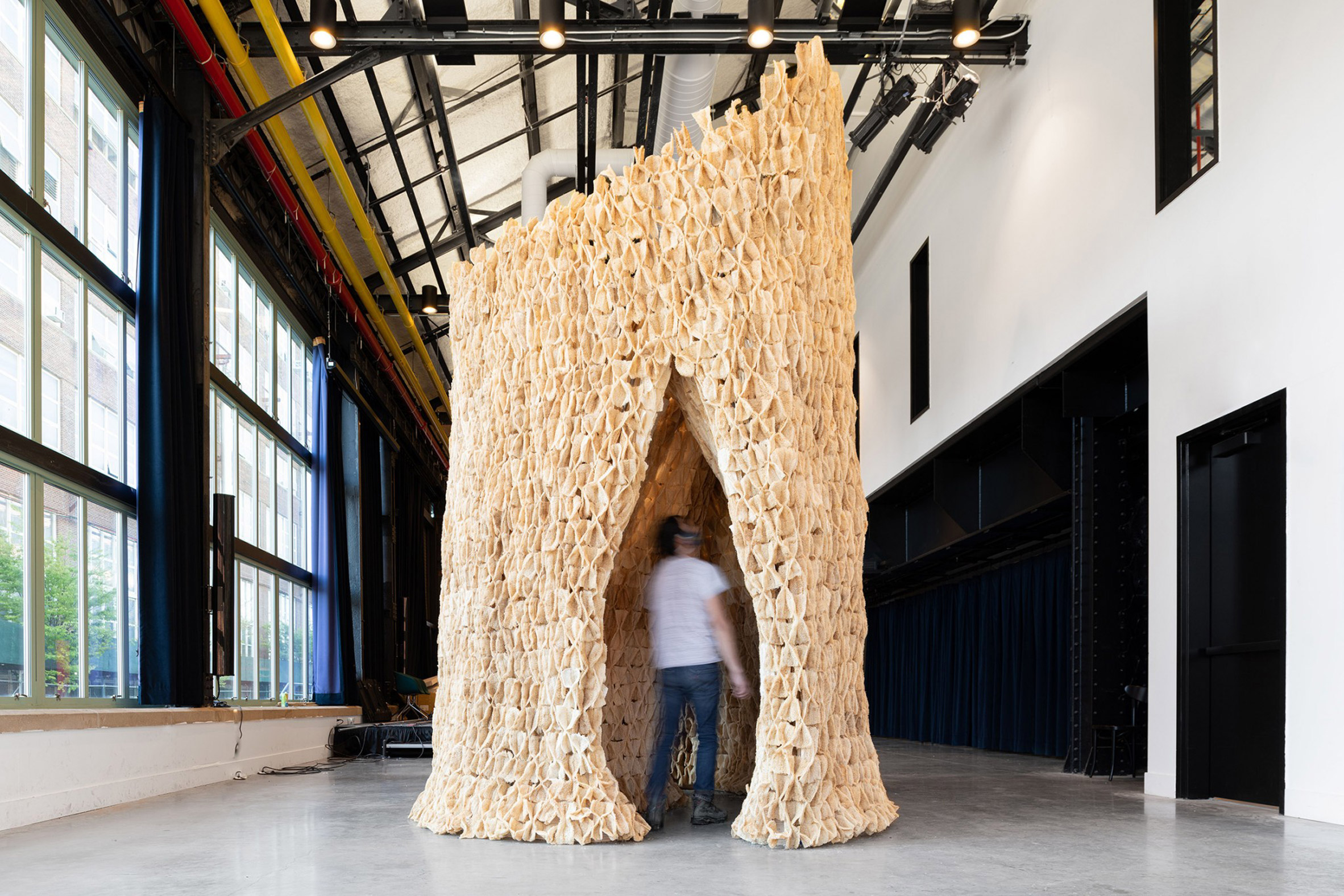
The pavilion represents an evolution of ongoing research by The Living, which has worked with biologists and academics to explore the potential of multi-species architecture and how best to harness the microbes that surround us all the time.
According to The Living founder and principal David Benjamin, advances in biological technologies such as bio-computing, bio-sensing and bio-fabricating offer new opportunities for using living organisms in architecture.
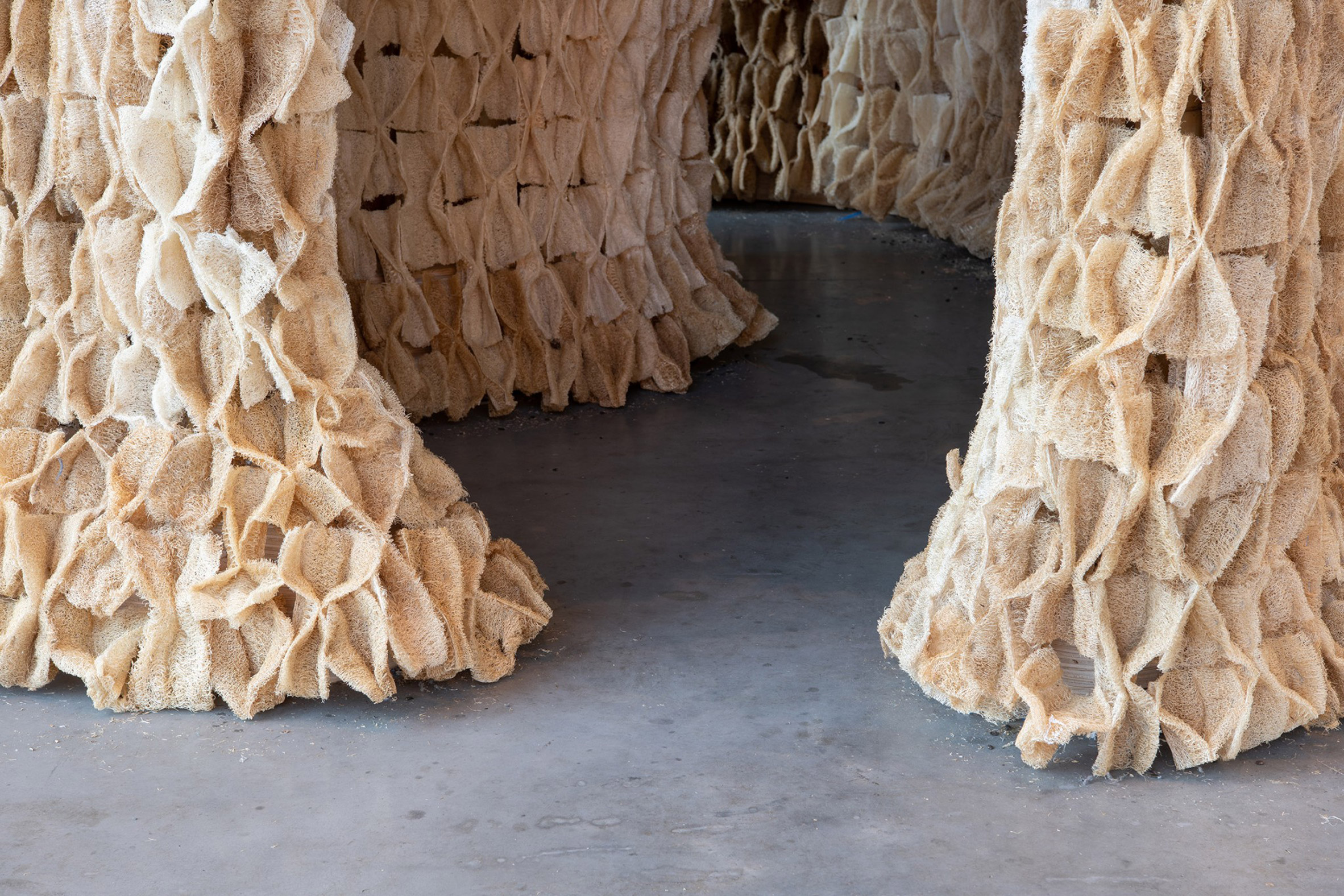
The exhibition at the Arsenale examines the potential for creating an "urban microbiome" that would see cities evolve to become more healthy and sustainable by employing bio-receptive materials in their construction.
"As a society, we are increasingly aware of how a good gut microbiome promotes individual health," Benjamin told Dezeen, "and in a similar way, it is now clear that a good urban microbiome promotes public health."
"This means that instead of creating architecture and spaces that are sterile and antibiotic, we should develop environments that are alive and probiotic."
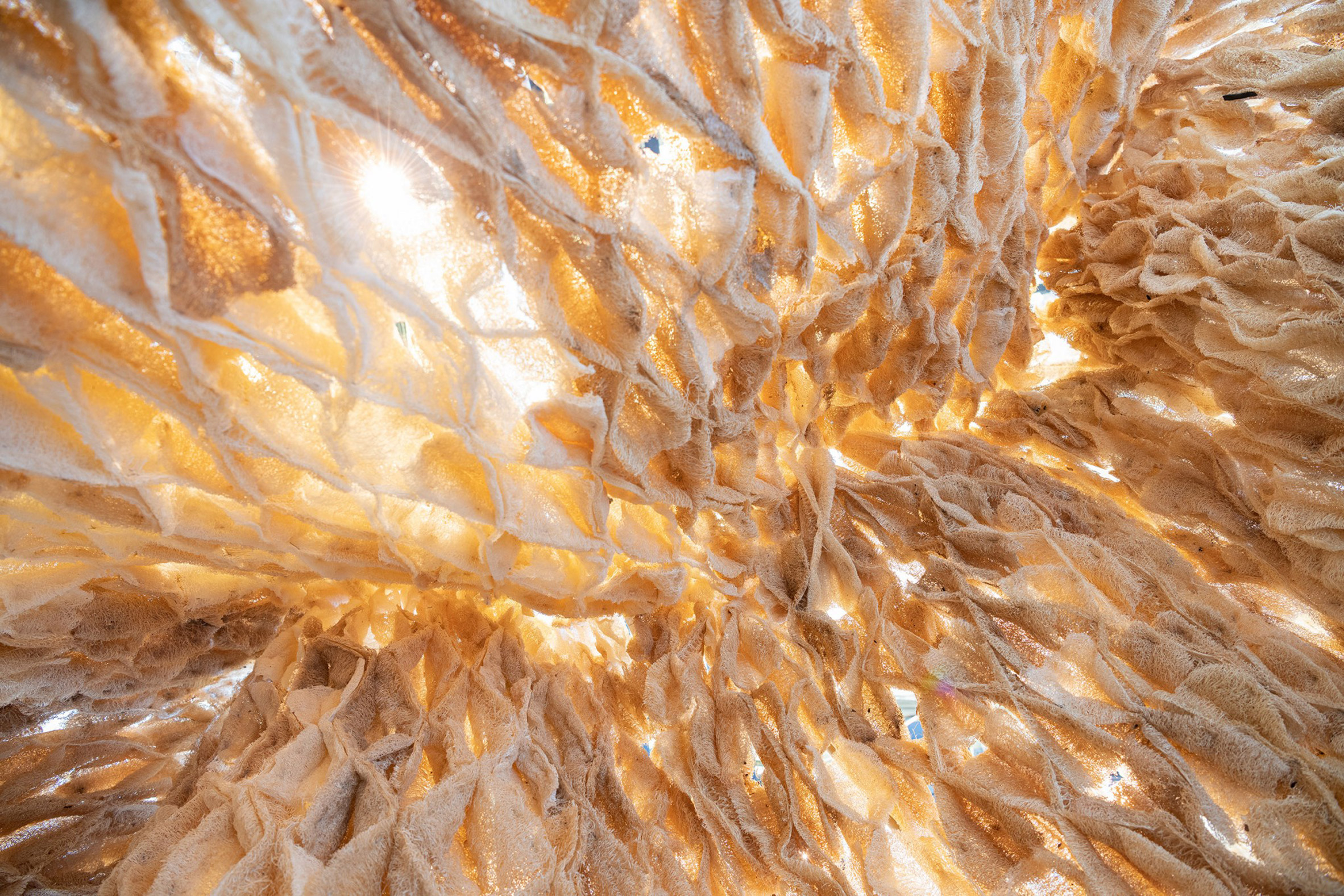
Bio-receptive materials trap and host microorganisms in surfaces containing pockets with different temperatures, moisture levels, air flow and nutrients. These organic, living materials support colonies of microbes that in turn promote the health of people in their vicinity.
The Alive installation is made from dried fibres of luffa – an inexpensive, renewable and fast-growing vegetable that grows on vines in tropical and subtropical regions.
Luffa's fibrous surfaces form a strong and organic material that is ideally suited to hosting diverse microbes and could be easily adapted to form panelling products or partitions for use in architectural projects.
"The project is a prototype for architecture of the future, but at the same time it is relevant to current buildings," Benjamin suggested.
"[Luffa] can be easily adapted into many environments like today's offices and restaurants, with partition walls and acoustic tiled ceilings, or tomorrow’s buildings with microbial facades that remove pathogens from the air."
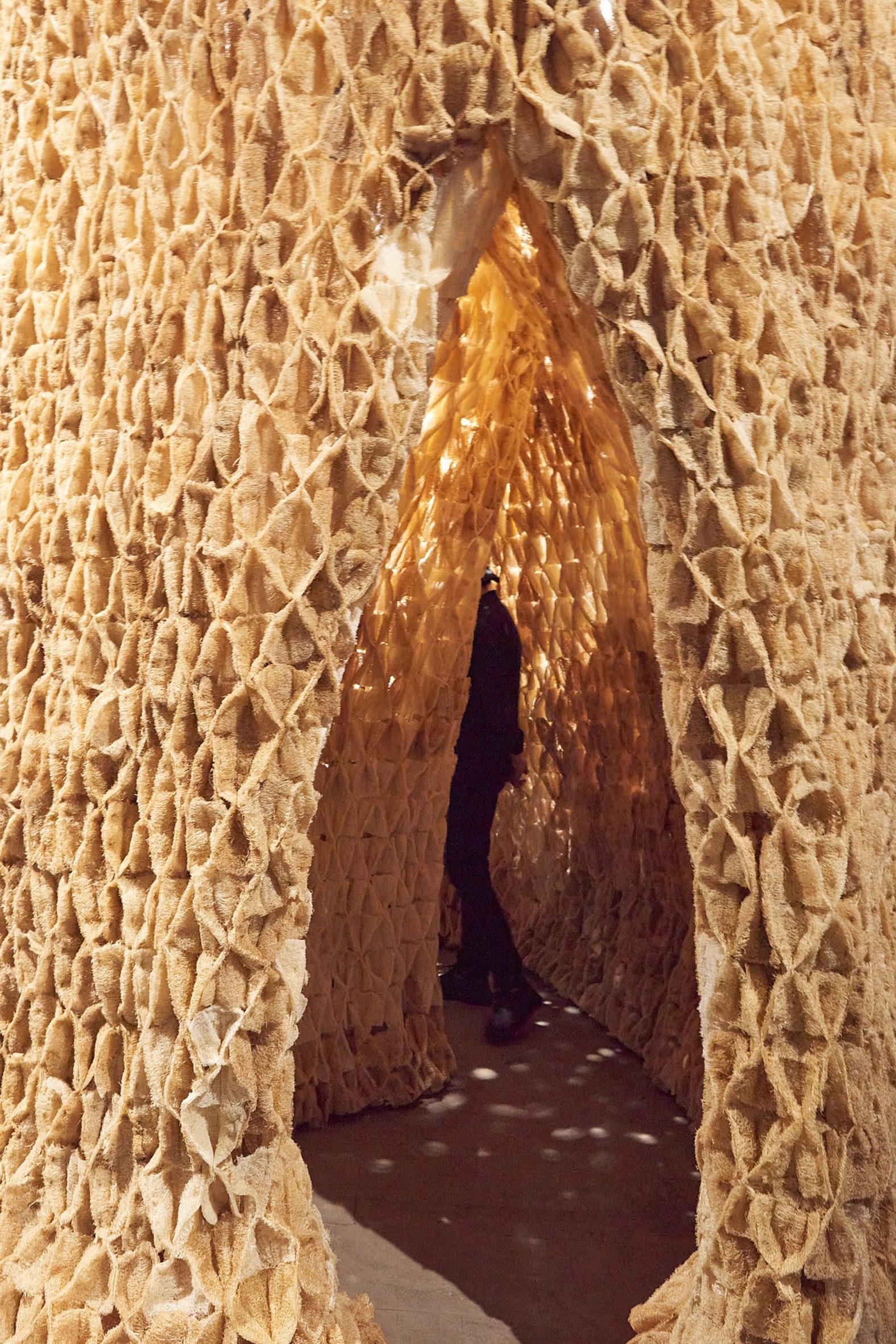
The pavilion's design promotes the architectural possibilities of luffa and other probiotic materials while also creating spaces that allow different levels of light and air flow.
Following the conclusion of the Biennale in November 2021, the prototype will be deconstructed and used for several ongoing experiments. One section will be returned to New York City and analysed to assess how microbes grow in different conditions.
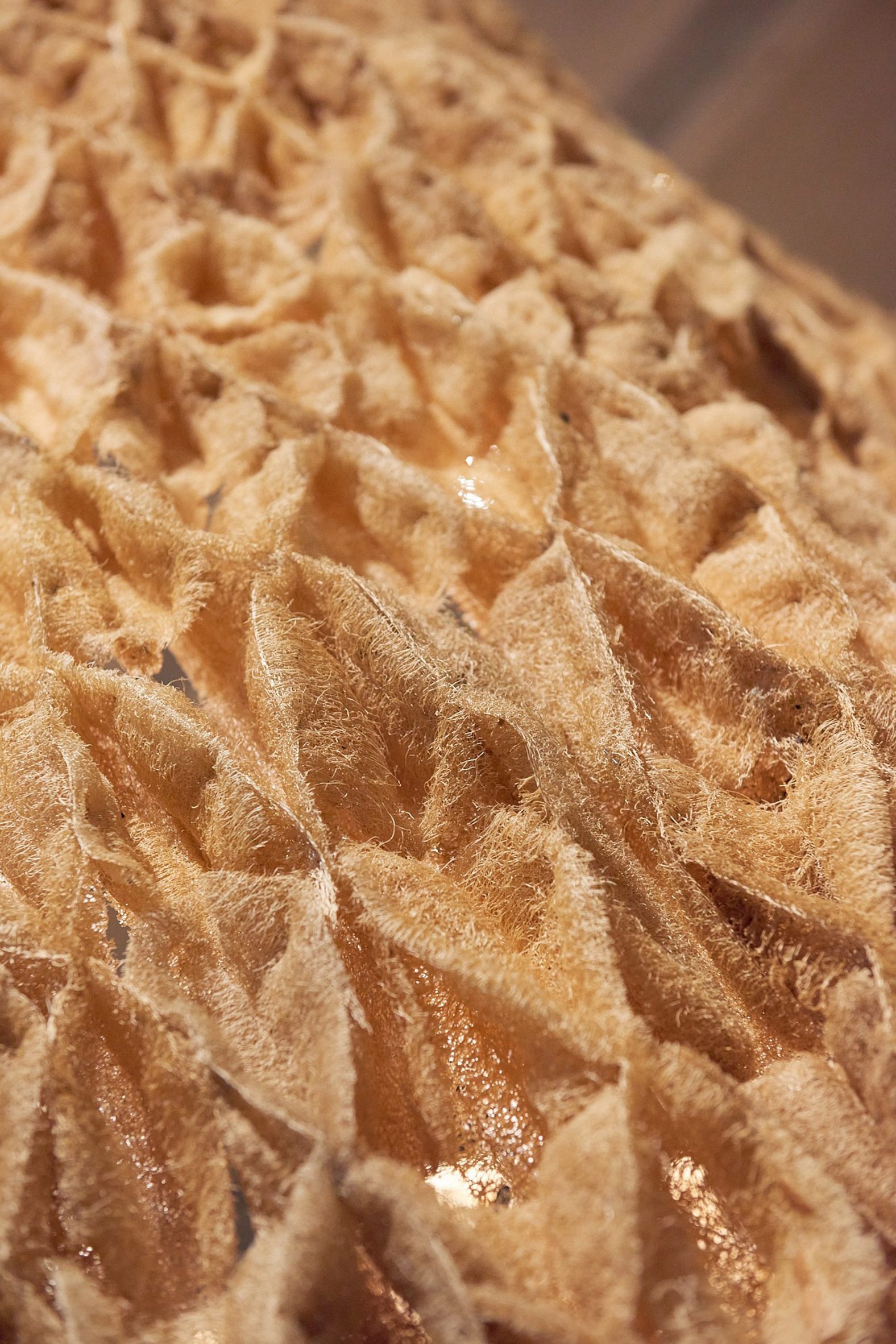
Researchers and previous collaborators Kevin Slavin and Elizabeth Henaff will use a DNA sequencer to determine what species of bacteria lived in the material.
Comparing this DNA with samples from other materials and locations will allow the project to feed into early studies about the biomes of various buildings and cities.
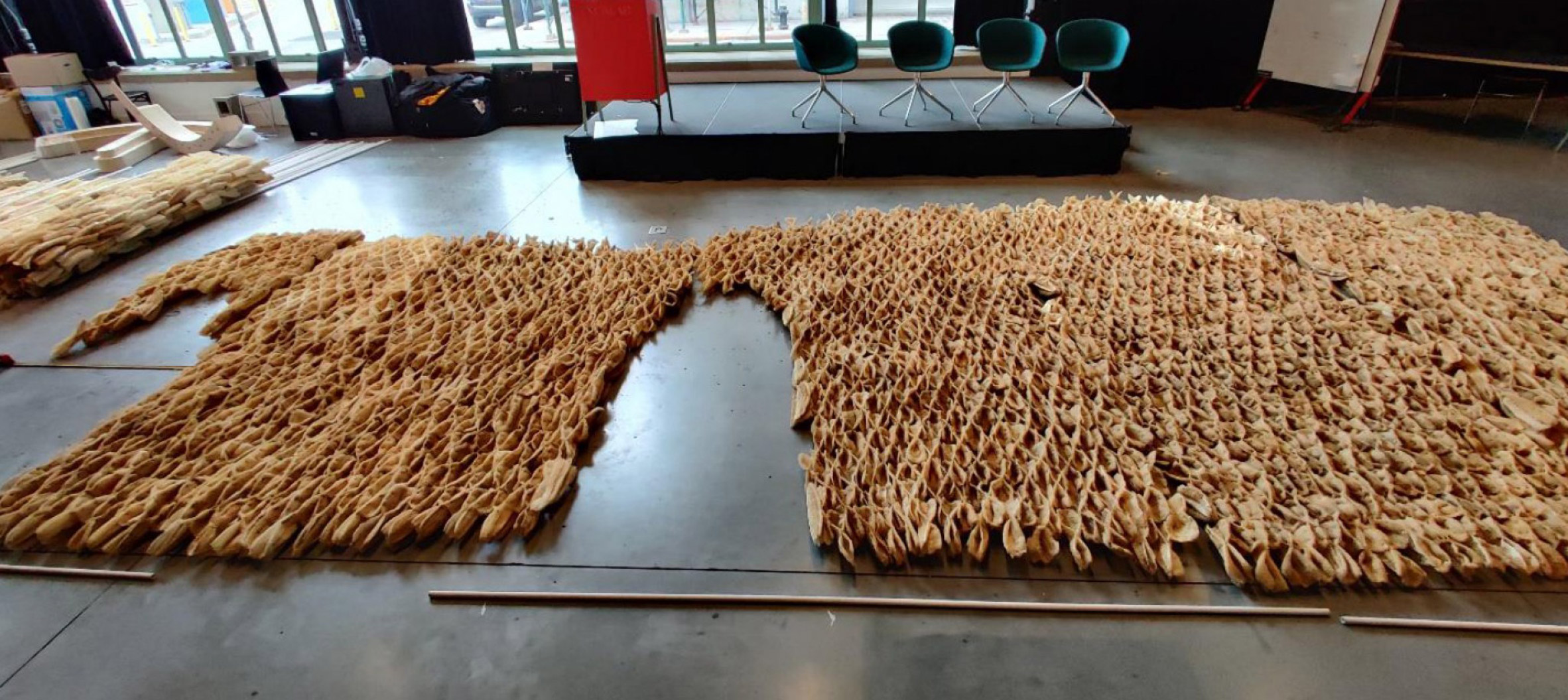
The Living's previous projects include a temporary pavilion made entirely from bricks grown using organic materials that was installed at the MoMA PS1 gallery in 2014.
Other projects shortlisted in the small building category of Dezeen Awards 2021 include a writer's cabin fitted with a wavy bookshelf by Mudd Architects.
The post The Living creates "probiotic" architectural pavilion that supports living microbes appeared first on Dezeen.
from Dezeen https://ift.tt/3B7JX8Q
No comments:
Post a Comment